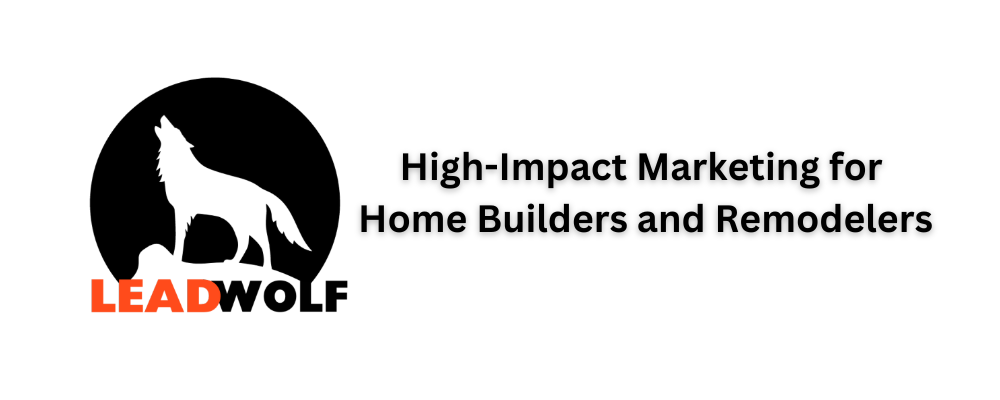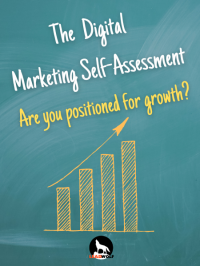How To Spend More Time On My Business, Not My Marketing
Focusing on business growth is paramount for long-term success in today’s competitive business landscape. However, entrepreneurs often catch up in time-consuming marketing, neglecting crucial aspects of their core business operations. Unfortunately, this challenge is common, with limited time and resources hindering the pursuit of growth opportunities.
That’s where this blog comes in. Our purpose is to provide practical tips and strategies that will enable you to spend more time on your business and less on marketing. By implementing these proven techniques, you can strike a balance and prioritize your efforts toward driving business growth.

Assessing Your Marketing Efforts
As a business owner, you know marketing is essential for growing your business. But how do you know if your marketing efforts are working?
The answer is to assess your marketing efforts regularly. This involves reviewing your current marketing strategies and channels, identifying high-impact marketing activities, and determining each marketing effort’s return on investment (ROI).
Reviewing Current Marketing Strategies and Channels
The first step in assessing your marketing efforts is to review your current marketing strategies and channels. This includes your website, social media, email, and other marketing channels.
Assess how well each channel performs in reach, engagement, and conversions. Are you reaching your target audience? Are they engaging with your content? Are you generating leads and sales?
Identifying High-Impact Marketing Activities
Once you’ve reviewed your current marketing strategies and channels, you can identify the high-impact marketing activities driving results. These activities generate the most leads, sales, and website traffic.
Focus your marketing efforts on these high-impact activities and scale them up. This will help you to get the most out of your marketing budget.
Determining the Return on Investment (ROI) for Each Marketing Effort
The final step in assessing your marketing efforts is determining each marketing effort’s ROI. This involves tracking the leads, sales, and website traffic each marketing channel generates.
Once you know the ROI for each marketing effort, you can decide where to allocate your marketing budget. This will help you to maximize your marketing ROI and grow your business.
Following these steps, you can assess your marketing efforts and ensure they work effectively. This will help you to grow your business and reach your target audience.
Outsourcing Marketing Tasks
Outsourcing marketing tasks can be a great way to save time and money while still getting the results you need. Here are a few things to keep in mind when outsourcing your marketing:
Understanding the benefits of outsourcing
There are many benefits to outsourcing your marketing, including:
- Saving time: Outsourcing can free up your time so you can focus on other aspects of your business.
- Saving money: Outsourcing can be more cost-effective than hiring in-house staff.
- Accessing expertise: Outsourcing gives you access to the expertise of marketing professionals.
- Scaling your business: Outsourcing can help you scale your business more quickly and easily.
Identifying marketing tasks suitable for outsourcing
Not all marketing tasks are ideal for outsourcing. Some jobs, such as developing your marketing strategy, are best handled in-house. However, many tasks can be outsourced, such as:
- Content creation includes writing blog posts, creating infographics, and producing videos.
- Social media management includes creating and scheduling social media posts and responding to comments and messages.
- Email marketing includes creating and sending email newsletters and managing email lists.
- Pay-per-click (PPC) advertising: This includes creating and managing PPC campaigns.
- Search engine optimization (SEO): This includes optimizing your website for search engines.
Finding reliable marketing agencies or freelancers
Once you’ve identified the tasks you want to outsource, you must find reliable marketing agencies or freelancers. There are many ways to find them, including:
- Online directories: Many online directories list marketing agencies and freelancers.
- Word-of-mouth: Ask your friends, family, and colleagues for recommendations.
- Online reviews: Read reviews of marketing agencies and freelancers before hiring them.
Setting clear expectations and monitoring progress
Once you’ve found a marketing agency or freelancer, setting clear expectations and monitoring their progress is essential. Make sure you agree on the following:
- The scope of work: What tasks will they be responsible for?
- The timeline: When will the work be completed?
- The budget: How much will you pay them?
Monitoring their progress to ensure they’re on track and meeting your expectations is also essential.
Outsourcing your marketing can be a great way to save time and money while still getting the results you need. Following these tips, you can find reliable marketing agencies or freelancers and set clear expectations to ensure a successful working relationship.

Automating Marketing Processes: A Guide to Getting Started
Marketing automation is the use of software to automate repetitive marketing tasks. This can free up your time to focus on more strategic and creative aspects of your marketing efforts.
Many different marketing automation tools and software are available, so choosing one that’s right for your needs is essential. Some factors to consider include your business size, budget, and specific tasks you want to automate.
Once you’ve chosen a marketing automation tool, you can start automating your marketing processes. Here are a few ideas to get you started:
- Streamline repetitive tasks: Marketing automation can help you streamline repetitive tasks, such as sending email newsletters, updating social media profiles, and managing leads.
- Implement email marketing automation: Email marketing automation can help you send targeted and personalized emails to your subscribers. This can help you increase open rates, click-through rates, and conversions.
- Leverage social media scheduling tools: Social media scheduling tools can help you schedule social media posts in advance. This can save you time and ensure you’re constantly posting fresh content on your social media profiles.
Marketing automation can be a powerful tool for businesses of all sizes. By automating your marketing processes, you can free up your time and resources so you can focus on growing your business.
By following these tips, you can start automating your marketing processes and free up your time to focus on growing your business.
Creating an Efficient Marketing Plan
A marketing plan is a document that outlines your marketing goals, strategies, and tactics. It is an essential tool for any business that wants to reach its target audience and achieve its marketing goals.
There are four critical steps to creating an efficient marketing plan:
- Define clear marketing objectives and goals. What do you want to achieve with your marketing efforts? Do you want to increase brand awareness, generate leads, or drive sales? Once you know your objectives, you can develop strategies and tactics.
- Prioritize marketing activities based on business needs. Not all marketing activities are created equal. Some activities will be more critical to your business than others. Prioritize your marketing activities based on your business goals and budget.
- Develop a detailed marketing calendar. Once you know your priorities, you can create a detailed marketing calendar. This will help you track your progress and ensure that you are on track to achieve your goals.
- Allocate time and resources effectively. Marketing can be a time-consuming and expensive endeavor. It is important to allocate your time and resources effectively so that you get the most out of your marketing efforts.
Creating an efficient marketing plan can be daunting, but it is essential for any business that wants to succeed. Following these tips, you can create a plan to help you reach your target audience and achieve your marketing goals.

Leveraging Content Marketing
Content marketing is a powerful tool to help businesses achieve their goals. By creating and sharing high-quality content, companies can attract new customers, build relationships with existing customers, and drive sales.
There are four key steps to leveraging content marketing:
- Understand the power of content marketing. Content marketing is a long-term strategy that requires time and resources. However, it can be a very effective way to reach your target audience and achieve your marketing goals.
- Create a content strategy aligned with business goals. Your content strategy should be aligned with your overall marketing goals. What do you want to achieve with your content marketing efforts? Once you know your goals, you can develop a strategy.
- Repurpose content across multiple channels. Once you have created high-quality content, you can repurpose it across multiple channels, such as your website, blog, social media, and email marketing. This will help you reach a wider audience and get the most out of your content.
- Outsource content creation if needed. If you need more time or resources to create content in-house, you can outsource it to a professional content marketing agency. This can be a cost-effective way to get high-quality content aligned with your marketing goals.
Following these steps, you can leverage content marketing to achieve your business goals.
Leveraging content marketing can be daunting, but it is essential for any business that wants to succeed. Following these tips, you can create a content marketing strategy to help you reach your target audience and achieve your marketing goals.
Continuous Learning and Professional Development
In today’s ever-changing world, it is more important than ever for businesses to invest in continuous learning and professional development. By staying up-to-date on the latest trends and best practices, companies can use the most effective marketing strategies to reach their target audience and achieve their goals.
There are many ways for businesses to invest in continuous learning and professional development. Some standard methods include:
- Keeping up with industry trends and best practices: This can be done by reading industry publications, attending conferences and webinars, and networking with other business owners and marketers.
- Attending relevant conferences, webinars, and workshops: This is a great way to learn about new marketing strategies and techniques from industry experts.
- Networking with other business owners and marketers: Networking can be a great way to learn about new marketing opportunities and find partners and collaborators.
- Hiring or training a marketing manager: If you need more time or expertise to manage your marketing efforts in-house, you can hire a marketing manager or train an employee to take on this role.
By investing in continuous learning and professional development, businesses can ensure that they are using the most effective marketing strategies to reach their target audience and achieve their goals.
Here are some additional tips for continuous learning and professional development:
- Set goals: What do you want to achieve with your continuous learning and professional development efforts? Once you know your goals, you can develop a plan.
- Commit: Continuous learning and professional development take time and effort. Commit yourself to investing in your product.
- Find a mentor: A mentor can provide you with guidance and support as you pursue your continuous learning and professional development goals.
- Be patient: It takes time to learn and develop new skills. Be patient with yourself, and don’t expect to see results overnight.
Continuous learning and professional development are essential for businesses that want to succeed in today’s competitive marketplace. By investing in these areas, companies can ensure that they are using the most effective marketing strategies to reach their target audience and achieve their goals.
Conclusion
Spending more time on your business and less on marketing is crucial for long-term growth. You can reclaim valuable time and resources by reviewing and assessing your marketing efforts, outsourcing tasks, automating processes, and creating an efficient marketing plan. Remember to define clear objectives, prioritize activities, and allocate your resources effectively. Take action and implement these strategies to achieve a better balance between marketing and business growth. Embrace the long-term benefits that come with focusing on your core business activities. You have the power to drive your business forward and achieve success. Stay motivated, believe in yourself, and know you have the support to make it happen. Start prioritizing your business and watch it thrive.

